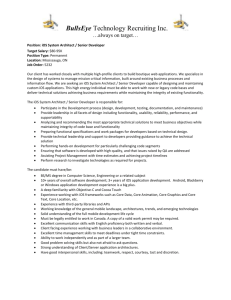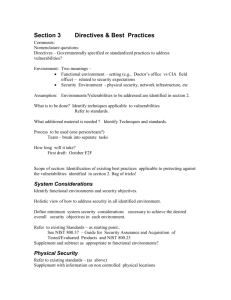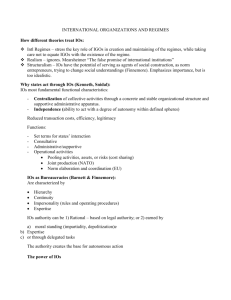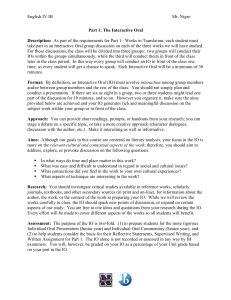Financial Information Resource System (FIRST)
advertisement
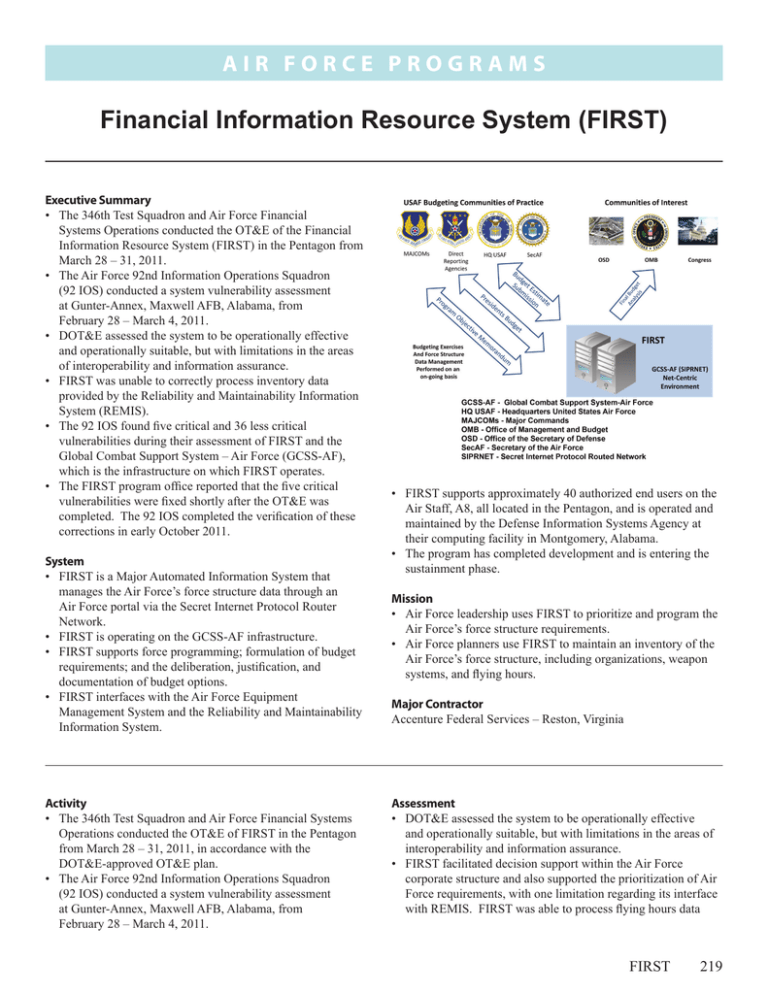
Ai r F o r c e P ROGRAMS Financial Information Resource System (FIRST) Executive Summary • The 346th Test Squadron and Air Force Financial Systems Operations conducted the OT&E of the Financial Information Resource System (FIRST) in the Pentagon from March 28 – 31, 2011. • The Air Force 92nd Information Operations Squadron (92 IOS) conducted a system vulnerability assessment at Gunter-Annex, Maxwell AFB, Alabama, from February 28 – March 4, 2011. • DOT&E assessed the system to be operationally effective and operationally suitable, but with limitations in the areas of interoperability and information assurance. • FIRST was unable to correctly process inventory data provided by the Reliability and Maintainability Information System (REMIS). • The 92 IOS found five critical and 36 less critical vulnerabilities during their assessment of FIRST and the Global Combat Support System – Air Force (GCSS-AF), which is the infrastructure on which FIRST operates. • The FIRST program office reported that the five critical vulnerabilities were fixed shortly after the OT&E was completed. The 92 IOS completed the verification of these corrections in early October 2011. System • FIRST is a Major Automated Information System that manages the Air Force’s force structure data through an Air Force portal via the Secret Internet Protocol Router Network. • FIRST is operating on the GCSS-AF infrastructure. • FIRST supports force programming; formulation of budget requirements; and the deliberation, justification, and documentation of budget options. • FIRST interfaces with the Air Force Equipment Management System and the Reliability and Maintainability Information System. Activity • The 346th Test Squadron and Air Force Financial Systems Operations conducted the OT&E of FIRST in the Pentagon from March 28 – 31, 2011, in accordance with the DOT&E‑approved OT&E plan. • The Air Force 92nd Information Operations Squadron (92 IOS) conducted a system vulnerability assessment at Gunter‑Annex, Maxwell AFB, Alabama, from February 28 – March 4, 2011. • FIRST supports approximately 40 authorized end users on the Air Staff, A8, all located in the Pentagon, and is operated and maintained by the Defense Information Systems Agency at their computing facility in Montgomery, Alabama. • The program has completed development and is entering the sustainment phase. Mission • Air Force leadership uses FIRST to prioritize and program the Air Force’s force structure requirements. • Air Force planners use FIRST to maintain an inventory of the Air Force’s force structure, including organizations, weapon systems, and flying hours. Major Contractor Accenture Federal Services – Reston, Virginia Assessment • DOT&E assessed the system to be operationally effective and operationally suitable, but with limitations in the areas of interoperability and information assurance. • FIRST facilitated decision support within the Air Force corporate structure and also supported the prioritization of Air Force requirements, with one limitation regarding its interface with REMIS. FIRST was able to process flying hours data FIRST 219 Ai r F o r c e P ROGRAMS • • • • but was unable to process inventory data, thus hampering planning actions. FIRST could be satisfactorily deployed, maintained, and sustained. User surveys indicated that FIRST was providing satisfactory training and program support. The 92 IOS found five critical and 36 less critical vulnerabilities during their information assurance assessment of FIRST and the GCSS-AF, which is the infrastructure on which FIRST operates. The FIRST program office reported that the five critical vulnerabilities were fixed shortly after the OT&E was completed. The 92 IOS completed the verification of these corrections in early October 2011. 220 FIRST Recommendations • Status of Previous Recommendations. This is the first annual report for this program. • FY11 Recommendations. The FIRST program office should: 1. Resolve the limitation regarding the processing of REMIS inventory data. 2. Work with the GCSS-AF program office to eliminate or mitigate the 36 less critical information assurance vulnerabilities reported by the 92 IOS to the satisfaction of their respective Designated Approving Authorities.
